PRESENTATION: Meret Oppenheim-My Exhibition , Part II
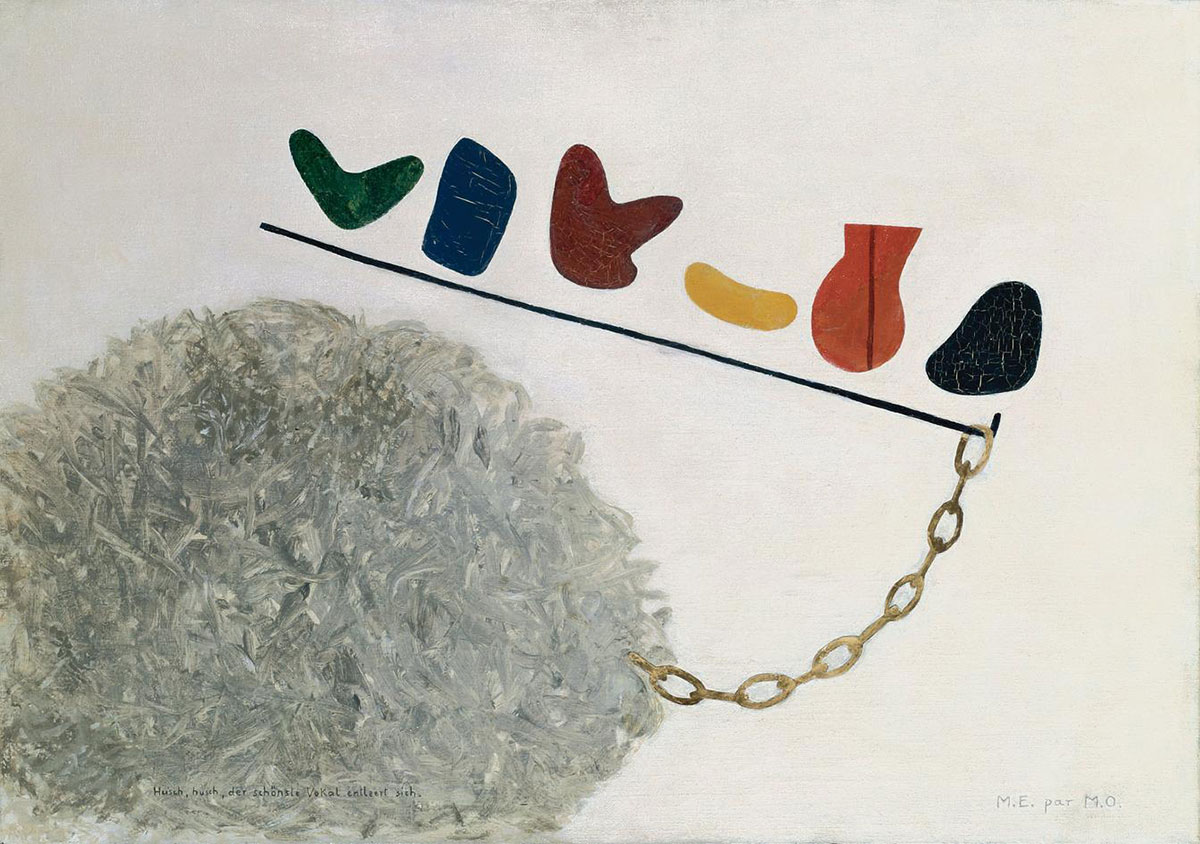 Meret Oppenheim, once scandalous muse, mysterious model and eternal myth of the surrealists, was one of the most unconventional and far-sighted artists whose creative oeuvre represents an extremely significant contribution to the art of the 20th century. From her artistic beginnings in 1930s Paris through her postwar career in Switzerland, Meret Oppenheim created art that defied neat categorizations of medium, style, and historical movement (Part I).
Meret Oppenheim, once scandalous muse, mysterious model and eternal myth of the surrealists, was one of the most unconventional and far-sighted artists whose creative oeuvre represents an extremely significant contribution to the art of the 20th century. From her artistic beginnings in 1930s Paris through her postwar career in Switzerland, Meret Oppenheim created art that defied neat categorizations of medium, style, and historical movement (Part I).
By Dimitris Lempesis
Photo: MoMA Archive
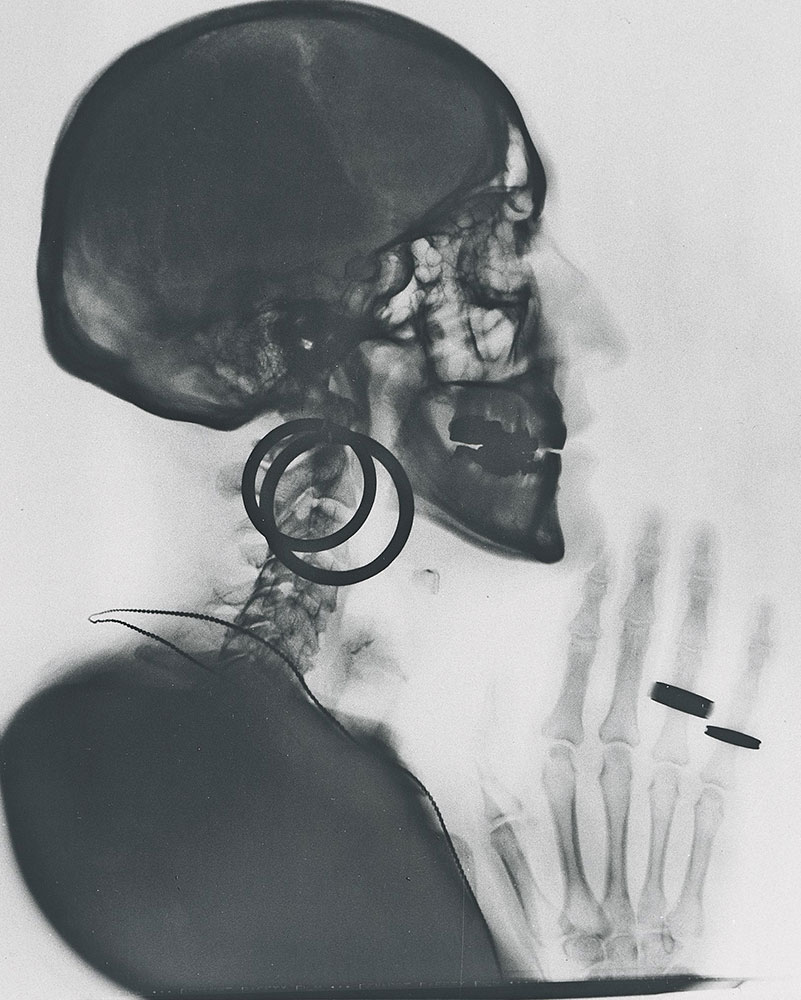
The retrospective “Meret Oppenheim: My Exhibition” surveys the full scope of Meret Oppenheim’s lifelong innovation through over 180 works, including paintings, sculptures, objects, collages, and drawings. Oppenheim’s artistic career began in 1930s Paris. At the age of 22, she produced her best-known work, “Object” (1936), a fur-lined cup, saucer, and spoon, this groundbreaking object catapulted Oppenheim to fame within French Surrealist circles, and subsequently provoked an intense response from American audiences when it was included in the landmark exhibition “Fantastic Art, Dada, Surrealism” (1936–37) at MoMA. During her early years in Paris, Oppenheim created doodle-like drawings, enigmatic paintings, uncanny objects, collages, and designs for jewelry and other fashion accessories. In 1937, she returned to Switzerland, where she trained as an art conservator and created relatively few works until an artistic reemergence in 1954, when she creatively flourished once again. The exhibition, which will be organized chronologically, will situate the artist’s remarkable work of the 1950s to the mid-1980s in relation to her precocious 1930s Surrealist production, giving parity to all moments and aspects of her career. One of Oppenheim’s final projects was a series of 12 drawings, later titled by the artist “M.O.: My Exhibition” (M.O.: Mon Exposition), which provided the inspiration for the current retrospective’s title. In these drawings, the artist imagined an exhibition of her life’s work, drawing in miniature approximately 200 works she had selected for inclusion. She presented a version of this exhibition in 1984, in her adopted home city of Bern, but always emphasized that it was “only an example” among many possibilities. As a teenager in Basel, Meret Oppenheim was inspired by Gothic fairytales and her dreams, which she recorded and illustrated in diaries. She left high school in 1931 to pursue painting, moving to Paris the following year. There, she became a member of the Surrealists, a literary and artistic circle that experimented with unconventional forms of art making as a means of tapping into the unconscious. Oppenheim would later say that she had been “doing Surrealism before the letter”—prior to her move to Paris, and without any knowledge of the concept or its practitioners. Yet she credited the Surrealists, who were mostly men, with being her first engaged audience and with encouraging her rebellious attitude and fantastical imagination. In Paris the self-taught Oppenheim produced a diverse body of work comprising droll doodles, abstract and narrative paintings, collages, and witty object-constructions. A fur-covered tea set and a trussed-up pair of white pumps on a silver platter demonstrate her uncanny ability to make the everyday strange. As the threat of war loomed across Europe, Oppenheim was forced to resume living full-time in Switzerland in 1937. Upon her return, she pursued a formal art education for the first time, attending the Basel School of Design for two years, where she also trained as an art conservator. Her studies had a noticeable impact on her work. She began to paint using newly acquired technical skills and invented narrative scenes, often dark in tone and populated by otherworldly and mythological figures. The subjects she chose lent themselves to themes of entrapment and isolation. Living near the German border, Oppenheim acutely felt the “continual tension and atmosphere of war,” as she wrote to a friend in 1941. This fraught historical period also marked the beginning of what the artist later referred to as an eighteen-year personal crisis. “This crisis was actually a crisis of self-confidence,” she reflected. “The whole patriarchal world fell on my neck.” She continued to produce art during these difficult years, much of which she destroyed or left unfinished. This gallery gathers examples of those that she preserved. Almost two decades after her “crisis of self-confidence” had begun, Oppenheim rented a studio in Bern, Switzerland, in 1954, and fully dedicated herself to art making. The paintings, objects, assemblages, and reliefs in this gallery are full of life, reflecting the artist’s creative reawakening. A beer stein sprouts a tail, a snout-like wooden wedge emerges from a clockface, and a pair of shoes produce an egg. Works depicting flora and fauna, as well as those incorporating natural materials like fungi, hint at cycles of growth and decay. Oppenheim’s approach to object making in the 1950s and ’60s—combining found materials in new arrangements, such that otherwise ordinary items are rendered strange—was consistent with that of her early Paris years. It was also shaped by her new social and artistic circle in Bern, which included the Nouveau Réaliste artists Jean Tinguely and Daniel Spoerri, who recycled objects from the urban environment in their work. In December 1983 Oppenheim began work on a set of twelve identically sized, meticulously rendered drawings of more than two hundred objects from her body of work. She intended the drawings, which she organized roughly chronologically, to serve as an open-ended guide for the curators of a traveling retrospective of her work that premiered at the Kunsthalle Bern the following year. On the first drawing, Oppenheim provided the following note: “This ‘Imaginary Exhibition’ is only an example. I had to leave aside many works that for me are no less important”. In her “Imaginary Exhibition,” Oppenheim occasionally breaks from her chronology to bring together works made at different times that explore similar ideas. These juxtapositions illustrate how she developed concepts over the span of her life. The installation in Bern, which was overseen by the artist and curator Jean-Hubert Martin, took inspiration from the drawings while also freely straying from them. The present exhibition follows the same principle, at times quoting both the drawings and 1984 retrospective, at others improvising. In the last decade of her life, even while she was contemplating her mortality and legacy, Oppenheim continued to make work with vitality.
Photo: Meret Oppenheim, Quick, Quick, the Most Beautiful Vowel is Voiding (Husch-husch, der schönste Vokal entleert sich), on recto M.E. par M.O./M.E. by M.O., 1934. Oil on canvas, 17 15/16 x 25 5/8 in. (45.5 x 65 cm). Bürgi Collection, Bern. © Artists Rights Society (ARS), New York / Pro Litteris, Zurich
Info: Curators: Anne Umland, Nina Zimmer. Natalie Dupêcher, Lee Colón, MoMA, 11 West 53 Street, Manhattan, New York, USA, Duration: 30/10/2022-4/3/2023, Days & Hours: Mon-Fri & Sun 10:30-17:30, Sat 10:30-19;00, https://www.moma.org/
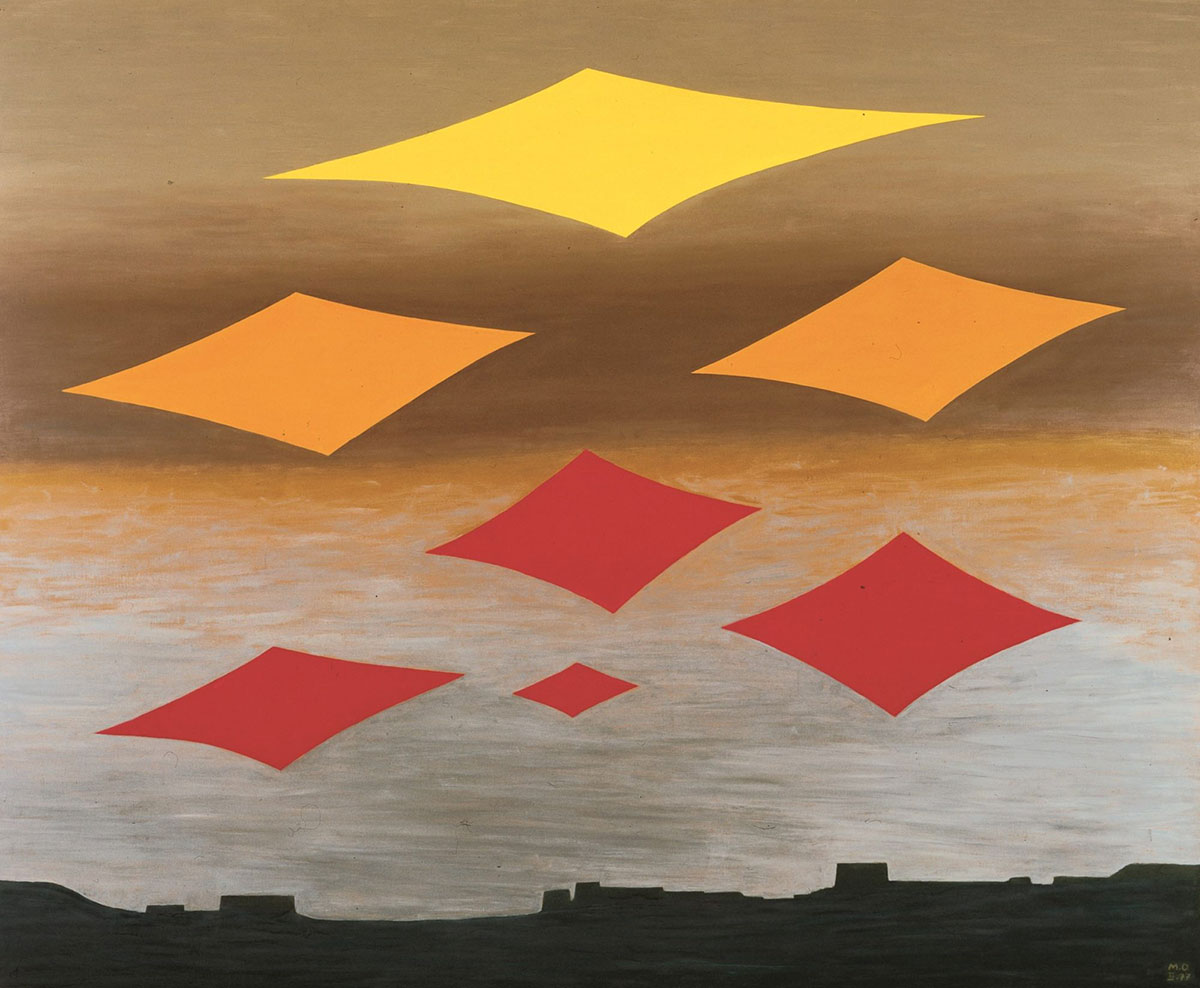
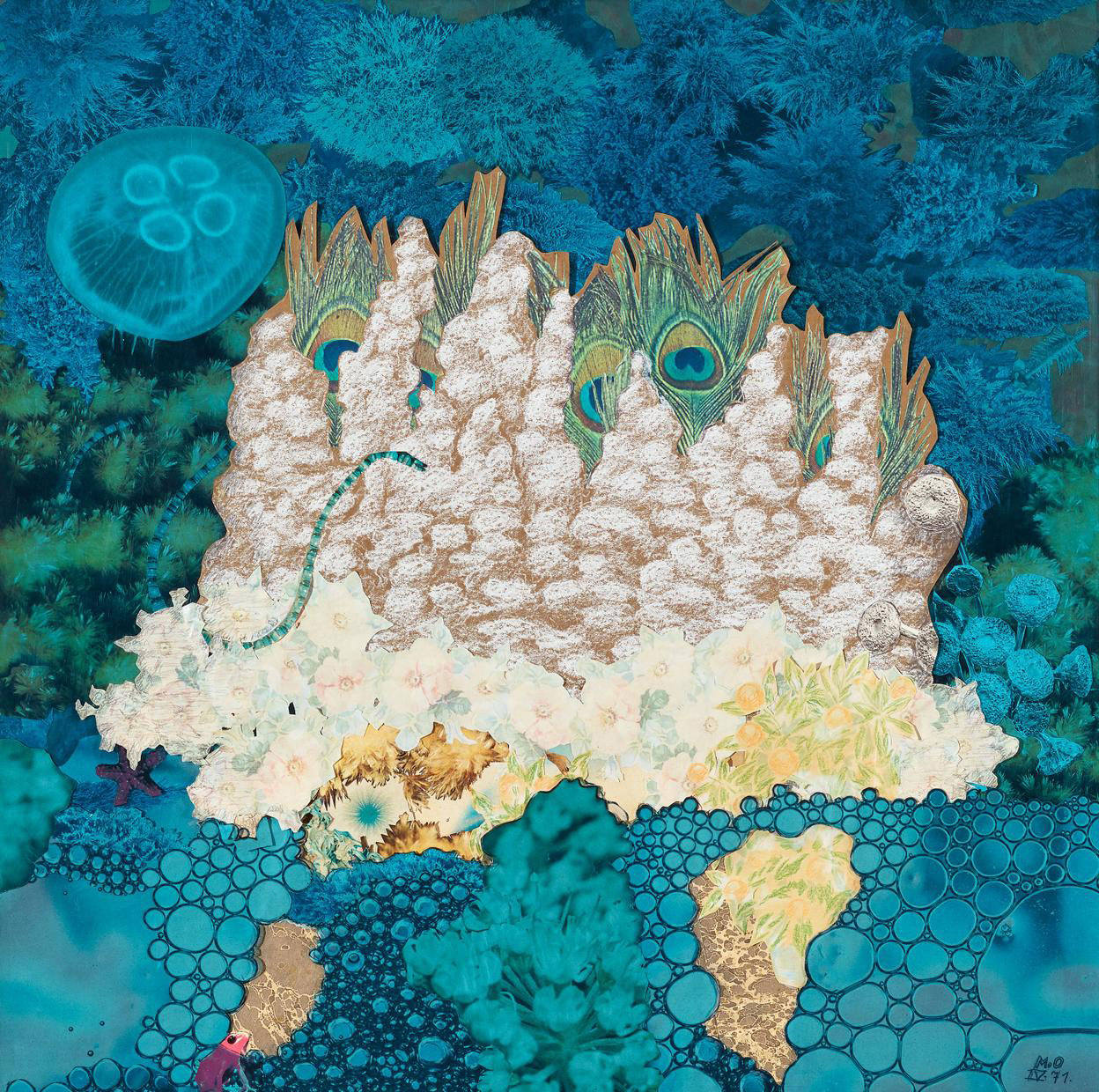
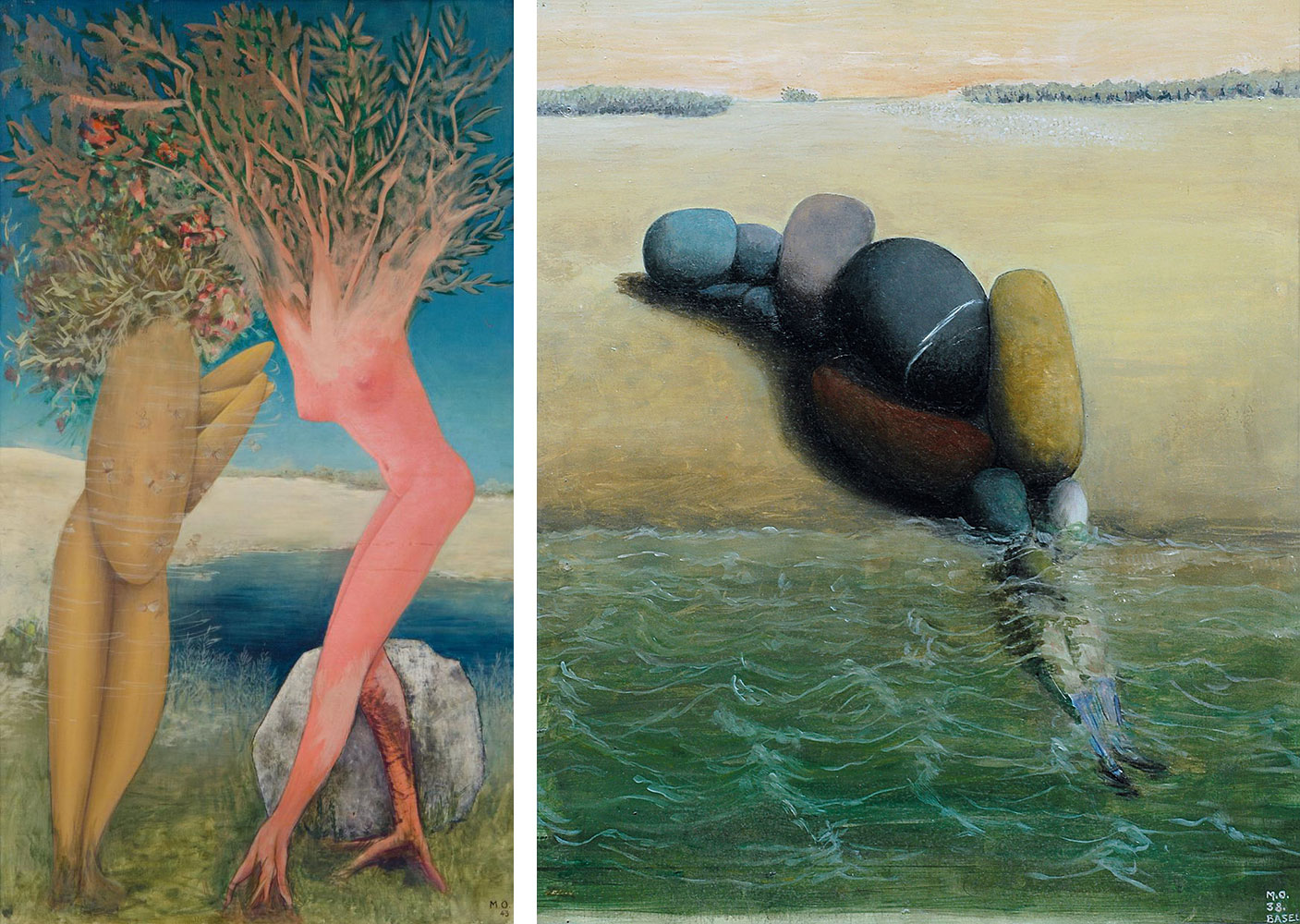
Right: Meret Oppenheim. Stone Woman (Steinfrau). 1938. Oil on cardboard. 23 ¼ x 19 5/16 in. (59 x 49 cm.). Private collection
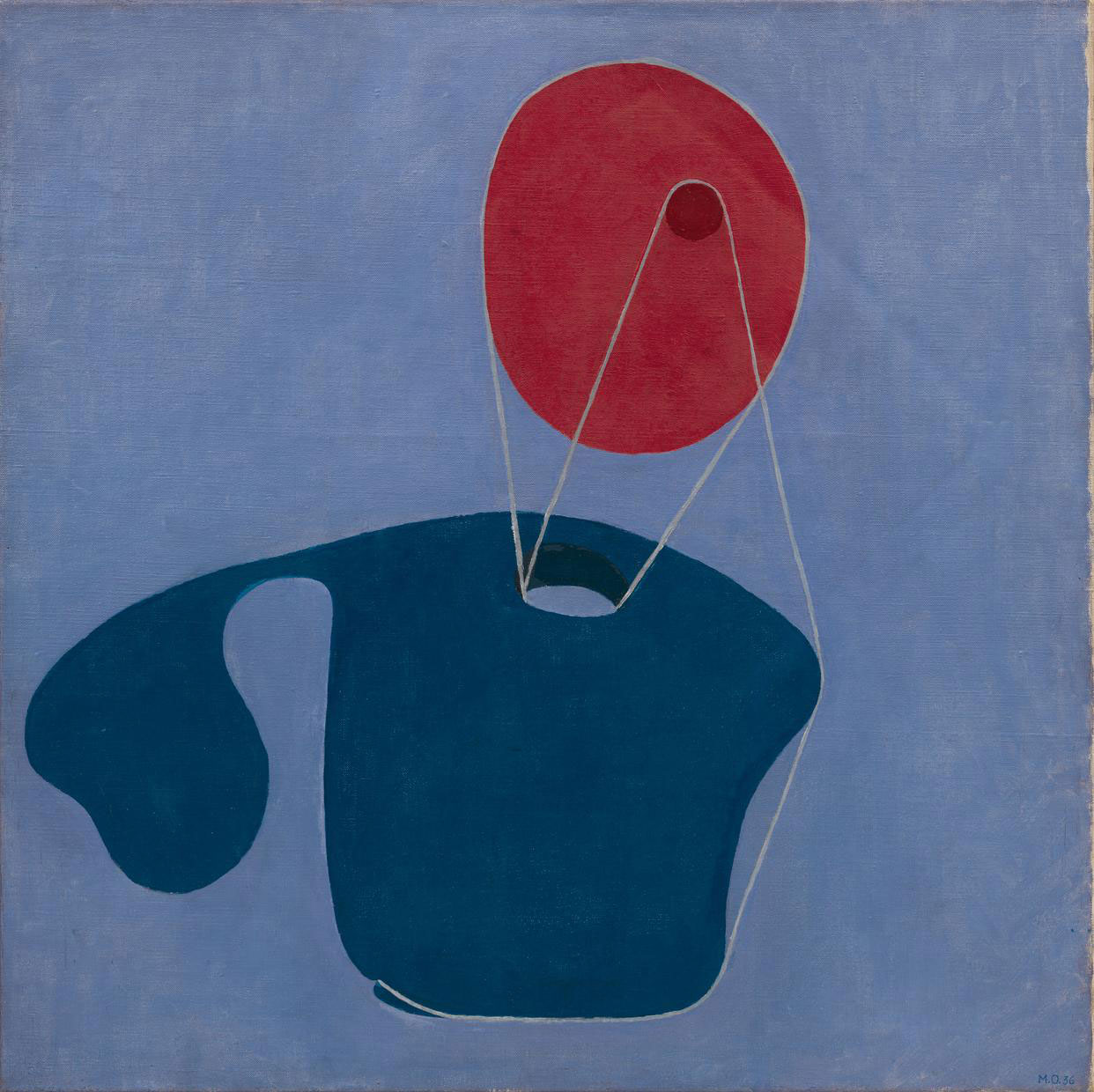
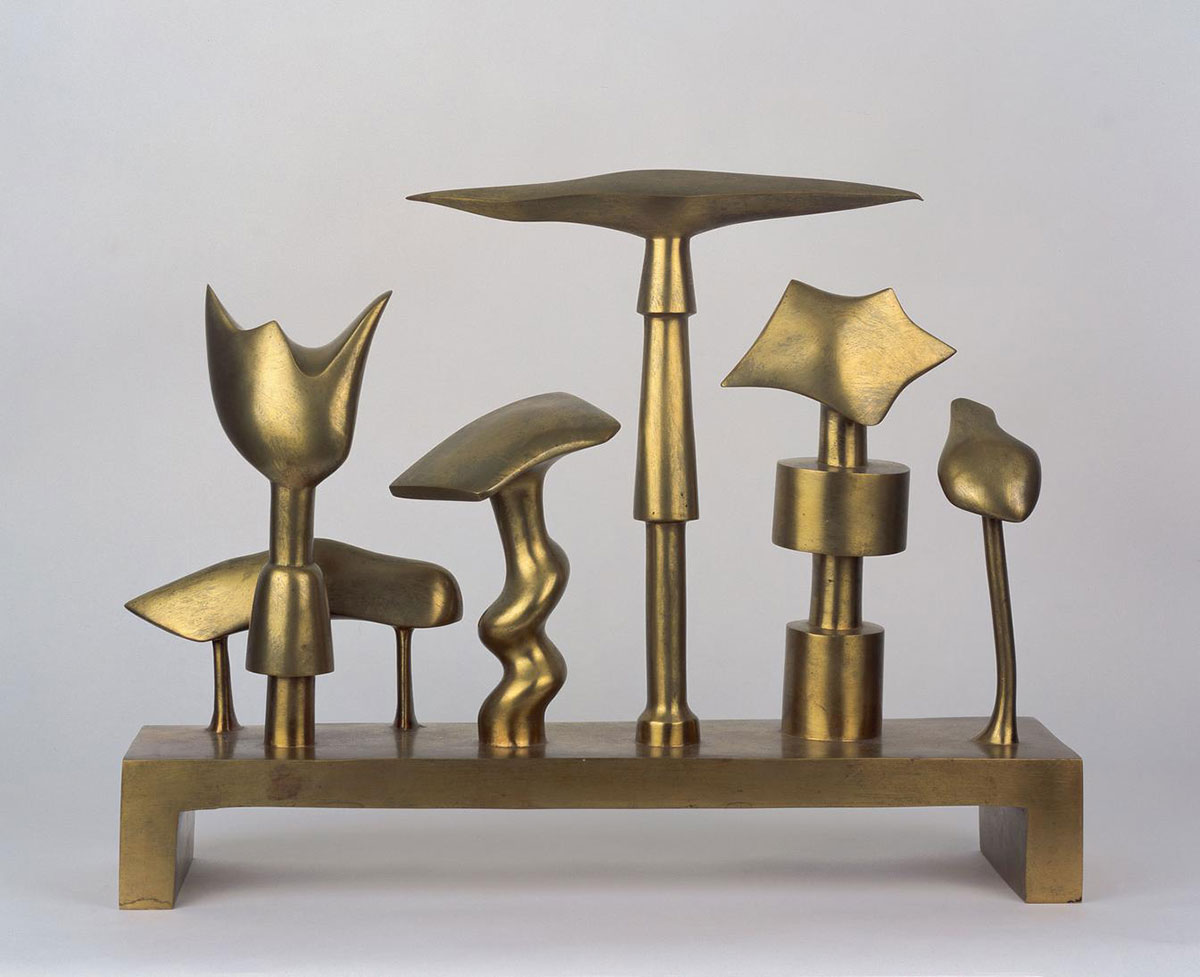
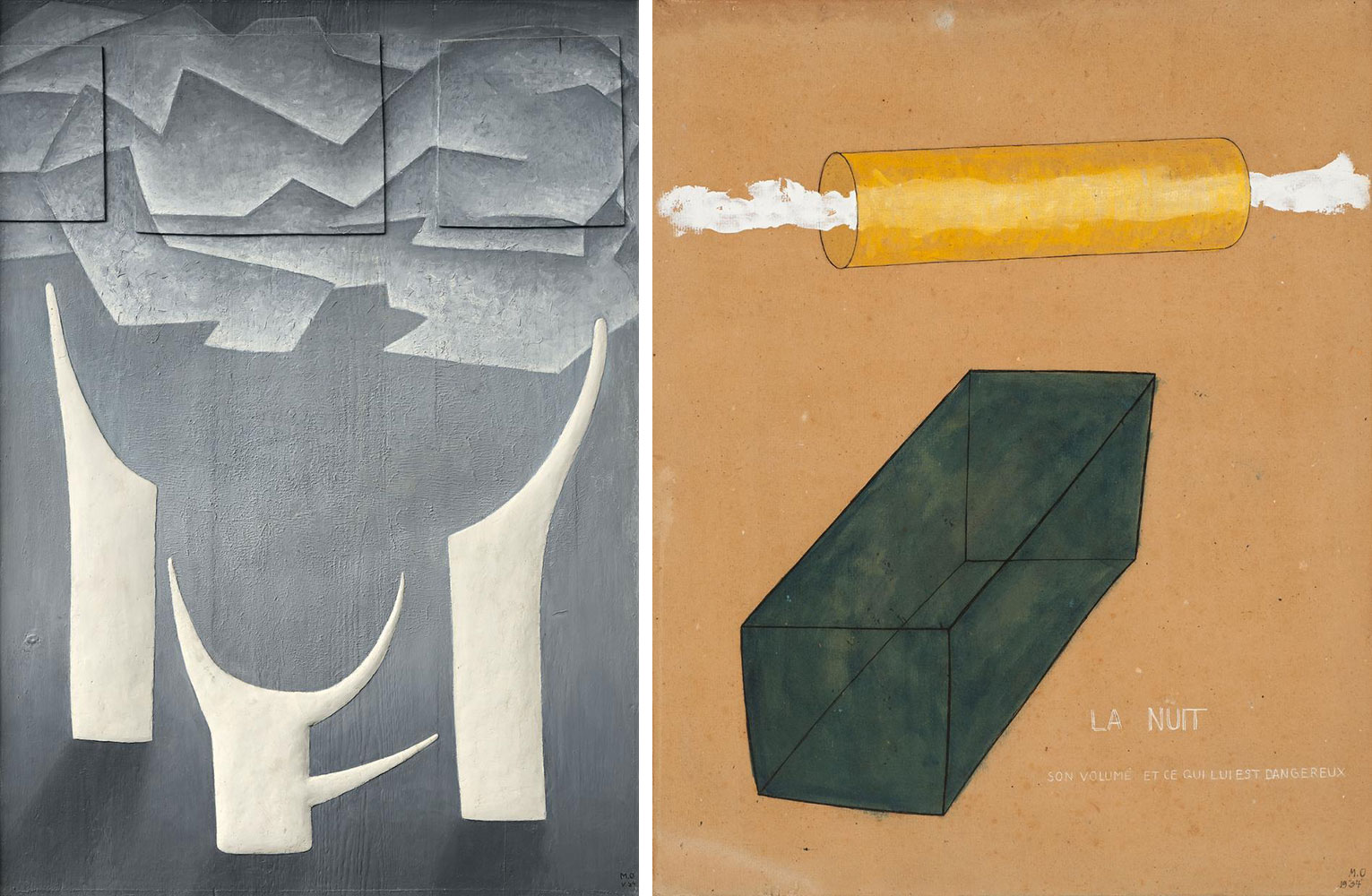
Right: Meret Oppenheim, The Night, Its Volume and What Endangers It (La nuit, son volume et ce qui lui est dangereux), 1934. Gouache and oil on board, 31 5/8 × 25 3/8 in. (80.3 × 64.5 cm). The Menil Collection, Houston, Purchased in part with funds provided by the John R. Eckel, Jr. Foundation. © Artists Rights Society (ARS), New York / Pro Litteris
